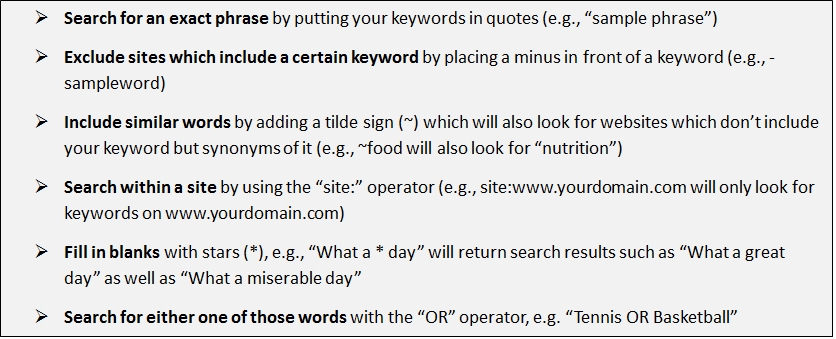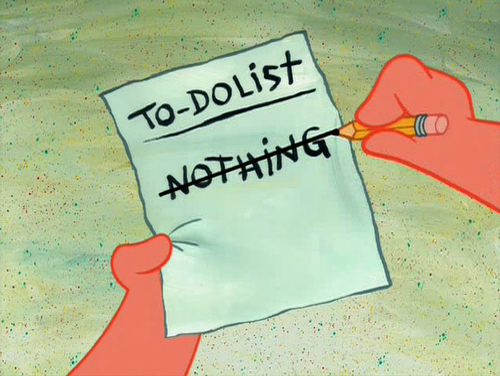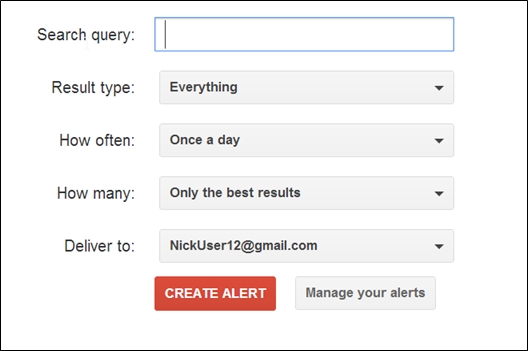-
My Learnings on How to Avoid Procrastination
by SebJun 19, 20130 Comment“Procrastination is one of the most common and deadliest of diseases and its toll on success and happiness is heavy.” – Wayne Gretzky
Procrastination is the enemy of all creativity. It doesn’t matter if you’re a Hollywood screenwriter, a web designer or – like Mr Gretzky – one of the greatest ice hockey players in history, the lure of Facebook, YouTube or an afternoon lazing in front of the TV when you should be working hard comes to us all, and it can be an absolute killer. You might not even realise you’re procrastinating until your deadline starts to loom large on the horizon, and then its panic stations.
There are lots of ways to combat procrastination, and some are easier than others. It’s too easy to say “don’t go on Facebook” or “use an app to lock you out of social media and certain websites”, there has to be more to it than that, or you can still easily fall back into bad habits.
The internet is a wonderful tool for research, inspiration and fun, but it swallows time like a whale swallows water, especially if you use it for some of these ridiculous means.
Set Yourself Goals
Setting yourself goals is a great way to avoid procrastination, and breaking them into small tasks can give you a great sense of reward every time you complete a task. If the majority of your working day is spent writing, you can split your goals into small tasks such as 1) Research 2) Choosing a topic 3) Outlining each piece of work (including making bullet points for each major point you want to make) and 4) Editing and rewriting. By doing this, you structure your work and give yourself goals to accomplish within your work. It also gives you focus, which is a vital part of avoiding procrastination and keeping on track. If your work starts to go off on a tangent and lose focus, the lure of Facebook or other distractions will become much more attractive.
My personal preference, especially when it comes to writing, is to research a topic, create a title (or headline) that sets up the piece nicely and create sub-headers that set up the rest of the piece. When I have this level of focus, I know exactly where I am and I can plough through the piece and get to the finishing line quickly. It’s also a great deal easier and less stressful to edit a full piece of work than to keep stopping and starting to try and find focus. You run the risk of becoming frustrated and bored – Never a good mood to be in when you’re trying to write something interesting.
-
How to Prioritize: a quick, yet comprehensive guide
by SebMay 21, 2013"Prioritizing is the answer to time management problems – not computers, efficiency experts, or matrix scheduling. You do not need to do work faster or to eliminate gaps in productivity to make better use of your time. You need to spend more time on the right things…"
— C. Ray Johnson, Chairman and CEO of Underground Technology Inc., and Author of CEO Logic: how to think and act like a Chief Executive
The ProblemIf you’re a decently-informed person, you should recognize the ubiquity of the phrase “get your priorities straight.” Who knows how many sayings there are on the matter, but it’s fairly agreed upon that having priorities is important, and setting them is even more important.
If you’re not familiar with the Pickle Jar theory, here is the link. The theory has circulated Facebook widely and was popularized as a story of a professor teaching his students a lesson: know what’s important in your life and set your priorities accordingly. Devote our time proportionally to the most important matters in our lives. Not the small matters.
Well, it’s easy to talk about setting our priorities, but how exactly do we do that? How do busy, pressured, and stressed people prioritize and find time for the important things when the small things demand so much of our time and attention?
The Solution
It’s easy. You make a daily list of tasks you need to get done and cross them off when you get them done. The goal? Cross off every item by the end of the day.
Since you’re still reading, I can safely assume that this hasn’t worked for you.
Prioritizing is essentially making that list and crossing it off. But it’s also much more than that. It’s a powerful tool if used correctly, and terribly confusing if not. It requires discipline and practice. And it requires planning and thought, which takes more time out of your day–time which you need.
However, you must take that time to prioritize. It’s part of the planning process, and failing to do so could cost you more time in the future. In fact, I insist you start taking 10 minutes at the end of each day to plan and prepare for the next. It’s good practice.
To prioritize correctly, you must take time to know yourself. Figure out how you work. How disciplined are you? When do you work best–mornings, evenings? Do you need coffee or exercise before you start your day? Are you realistic, pessimistic, or optimistic? Do you need somebody–a friend or spouse–to help keep you disciplined and accountable for what you do and don’t get done?
These are necessary questions, because they will help define what you think you can get done and by when. They will also help dictate what method of list-making will help you best.
-
How to Deal with Too Much Information
by SebApr 4, 2013We at SpecifcFeeds believe with all of our hearts that we are bombarded with too much information all of the time.
And it’s not just because of all the advertising, the news feeds, or the morning commute. There’s a lot of crap we have to know for our jobs, too, and it’s becoming more difficult to keep all of it under control, even as technology becomes exponentially more advanced.
Let’s look at some statistics.
Click here for the full graphic
On a personal level, you probably feel like you’re working harder now than in past years. (Unless you were a corporate slave, which is where many of us start, of course.) Coincidentally, firms worldwide have and are experiencing both record profits and productivity, even (and especially) during the economic downturns. Record productivity you say? Where does that come from?
Worker productivity has improved dramatically for various reasons, but we’ll just focus on one.
You. You’re doing more work: specifically, you’re processing more information.
Let’s look at some more quick stats.
Click here for the full graphic
That’s just an idea of the personal and economic costs the information overload is causing. I’m sure these stats don’t strike a personal chord with you. What do you care if the companies all across the nation loses $650 billion a year? They still pay you, right?
Well, the information overload has some interesting effects on decision making and emotional control. A look at the picture below will tell you more.
Click here for the full graphic
If you didn’t get that, what they are saying is that as your brain gets overloaded, you basically go into mental shock, lose your temper, and make stupid choices. It also probably makes you unhappy and less satisfied with your job, and it may have negative effects on your performance reviews.
-
How to use Google Alerts effectively
by SebFeb 24, 2013If you are not using Google Alerts you are missing out on a great way to stay on top of the (specific) news you are interested in. It’s a powerful (and free!) tool which screens the web for new content which matches your keywords.
In order to get maximum use out of the tool it’s required to know how to use google alerts effectively. In this post I’d like to share the different techniques I use, and for which purposes.
A quick primer: How to set up a google alert
After going on the Google Alerts page, you see this:
Most of it is self-explanatory, here are some additional tips:
-
Search term: You can use all operators as with a regular google search. Quick recap on the most important ones:

Have a look at a full overview for more of google’s search operators - Result type: Limit your search to certain areas (News, Blogs, Video, Discussions, Books)
- How often: This feature is similar to the “Personal Newspaper” delivery option on SpecificFeeds: instead of receiving messages instantly (which may bother you) you can choose to get all your search results once a day or once a week in a consolidated form (one email only)
-
How many: If your search query returns too many results you can limit them to “only the best results”; however: I’ve found that this returns only very few results. Instead of google making the selection for you, it’s better to think more about better keywords & phrases which don’t return that many results.
What you can use Google Alerts for
-
Track what people are saying about you
The challenge in google news alerts is similar as using google: you need to find the keywords which only give you the information you are interested in, and not irrelevant stuff (otherwise you will be bombarded with emails).This works very well for keywords which are unique to what you are looking for, such as your name. By setting up a google news alert with your name in quotation marks (“your name”) you stay on top of what people are saying about you on the web, which is a.) interesting in itself and b.) allows you to respond quickly to negative mentions. This is actually a no-brainer and I cannot see why somebody would not want to have this tracked.If your name happens not to be very unique, you can do the following: find out in what context your namesake’s names are mentioned. For example, if you discover that one of them is a Punk rock player you can exclude those hits by adding a -“punk rock” to the keyword phrase.
- Track what people are saying about other people who are important to you (relatives, your boss etc.) – if they didn't set up a google alert (most don’t) you can tell them what people are saying about them before they find out themselves.
- Track identity and content theft: if you set up a google alert with your name as mentioned above, you also track possible identity theft. However, google also allows you to track content theft; for that enter a unique string of your articles/content in google so that you get alerted if it appears somewhere on the web without your approval. Not as good as copyscape but it’s free.
- Prevent spam: enter your email address into google alerts so that you know on which sites your email is listed – which is a guarantee for spam as robots will find it and send you annoying emails.
- Track what people say about your product (similar to name above, if your product name is unique). You can respond to negative reviews in a timely fashion.
- SEO: Google Alerts can also be great for SEO purposes, building your reputation and building links
o Keep track who is linking to your site: “link:www.yourdomain.com”; Not only is it interesting to know who is linking to your site, but it may also give you link building ideas you have not thought about yet (i.e. if you see what type of site is linking to yours)
o Check who is newly linking to your competitors site so that you can ask those sites to link to you as well: “link: www.competitorslink.com”
o Turn citations into links: Track who is mentioning your name (“your name”) so that you can check if those sites only mention your name or link to you; if they don’t, ask them to do that, most will be happy to
o Set up alerts which notify you if other bloggers talk about your subject of expertise – great way to introduce you; Enter your subject area as keywords and select to only get alerts for blogs (and maybe discussions)
o Also keep in mind: Other bloggers, esp. top-bloggers, also have set up google alerts for their name. If you mention their full name in your blog post, it is possible that they find out about your post – a great and non-offensive way to get in touch with top bloggers (provided you talk about them in a nice way ;-))
- You can also find your customers directly by using keywords which they use. For example, as SpecificFeeds is an alternative to email newsletters, I set up alerts such as “how to set up a newsletter” “what is the best newsletter software” etc. to join the discussion and make smart suggestions 🙂
- Don’t be scared to set up many of those alerts – google allows you to set up up to 1000 – as long as they are specific enough. It’s worth the effort to come up with good search phrases once and then have a perfect tracking tool going forward.
- Check if your site is hacked or if users post naughty stuff on your site: I found this interesting tip here. If you enter a string such as…
o “Viagra OR Levitra OR Cialis OR Xanax site:www.yoursite.com” or
o “Poker OR hold-em OR Casino site:www.yoursite.com” or
o “Nude OR naked OR porn OR sex site:www.yoursite.com”
…you will get alerted if somebody has posted stuff on your site which shouldn’t be there (useful if you are running a site where other users can contribute).
Those are useful applications of Google Alerts which I use – do you know of any others?
-
Search term: You can use all operators as with a regular google search. Quick recap on the most important ones:
-
The Best Free Spam Filters for Outlook, Thunderbird and Outlook Express
by SebDec 24, 2012Avoiding information overload starts with filtering out unwanted news. This is especially true for email spam. We had a look at the available spam filters for Outlook, Thunderbird and Outlook Express and here’s our list of the better ones we found.
Background: Although most email systems now come with their own built-in spam filters we find them mostly clumsy and ineffective, potentially allowing spam to reach your inbox while sending genuine messages to your spam folder. This is especially true of older email programs. There are several more sophisticated add-on spam filters; these offer more customization, options and better filtering techniques. Commercial spam filters can be expensive but there are several good free options out there.
SpamBayes 1.1a6 (our pick)
SpamBayes is an add-on that plugs into Mozilla Thunderbird, Outlook Express, Yahoo, Gmail and other popular mail programs. It works with both IMAP and POP email accounts. As the name suggests, SpamBayes uses Bayesian filtering to fine-tune its response based on the emails you receive, your choices and the training you give it. If you're using POP, you'll see a custom header that you can use to tweak SpamBayes' settings. In IMAP, messages are moved directly to the server; you can train the filter by moving messages yourself.
Unlike many third-party spam filters, Spamihilator is designed to run unobtrusively in the background. It runs in between your email client and the Internet at large, attempting to catch spam before it reaches your email program. Messages flagged as spam aren't lost – Spamihilator drops them into a quarantine folder from which you can rescue anything that was put there in error. Spamihilator doesn't let you whitelist emails and can seem rather a blunt instrument when compared to filters that allow more hands-on adjustment but is very effective in filtering out junk mail. Spamihilator works with almost any email client.
Outlook Spam Filter (only for Outlook Express)
While not strictly speaking free, Outlook Spam Filter does offer a free trial so you can decide whether it's for you before paying the full price. Unlike third-party products, Outlook Spam Filter is released by Microsoft and was designed specifically for use with Microsoft's own Outlook Express. Positives include the intelligent Bayesian filtering which learns from your correspondence; there's also a handy feature that lets you check your outgoing mail to see if it might be mistaken for spam. You can build up your own lists of trusted friends (and untrusted enemies) to ensure that you never miss an important email. Outlook Spam Filter supports MS Exchange, POP3, HTTP and IMAP. One downside is that it can only be used with Outlook Express.
AntySpam is a fairly basic plug-in for Outlook. It relies on definitions and blacklists held on anti-spam servers to identify spam coming to your inbox. Experienced anti-spam filter users won't find much to impress them; on the other hand, if you're looking for a simple, free anti-spam filter without too many bells and whistles, this one may work for you. Servers used by AntySpam include Redhawk, Spamhaus, Spamcop etc; there's also the option to add a custom server of your own.
Matador is one of the more basic free spam filters on offer. It's a simple but effective plugin for Outlook, offering a small but well-chosen handful of essential features. Matador Spam Fighter comes pre-loaded with basic anti-spam data; once you begin using it, its adaptive Bayesian filter starts to build on this foundation to spot junk mail more accurately. Matador scans emails as they arrive in your inbox, diverting any that fit its spam definitions into a junk folder. If you wish, you can also clean any email folder manually. Matador also collects statistics on its own performance so you can see how well it's taking care of junk mail.










